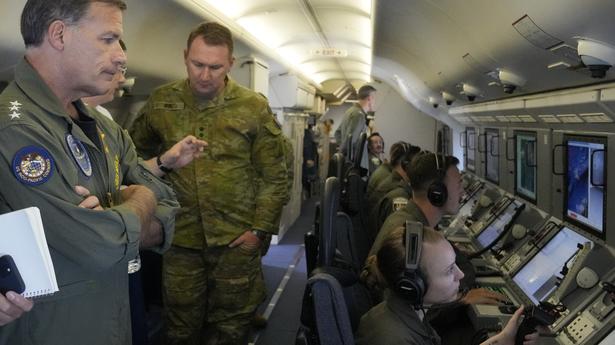
China says military development of islands within its rights
The Hindu
China says it has the right to develop South China Sea islands as it sees fit and is accusing the U.S. of undermining security in the disputed waterway
China on Tuesday said it has the right to develop South China Sea islands as it sees fit in the wake of U.S. accusations that it has fully militarised at least three of several islands it built in the disputed waterway in violation of a previous commitment.
China’s deployment of “necessary national defense facilities on its own territory is a right entitled to every sovereign country and is in line with international law, which is beyond reproach,” Foreign Ministry spokesperson Wang Wenbin told reporters at a daily briefing.
U.S. military activities in the area aimed to “stir up trouble and make provocations," Mr. Wang said. “That seriously threatens the sovereignty and security of coastal countries and undermines the order and navigation safety in the South China Sea."
On Sunday, U.S. Indo-Pacific Commander Adm. John C. Aquilino said China had armed the islands with anti-ship and anti-aircraft missile systems, laser and jamming equipment, and fighter jets, in an increasingly aggressive move that threatens all nations operating nearby.
Adm. Aquilino said the hostile actions were in stark contrast to Chinese President Xi Jinping’s past assurances that Beijing would not transform the artificial islands in contested waters into military bases. The efforts were part of China's flexing of its military muscle, he said.
“I think over the past 20 years we’ve witnessed the largest military buildup since World War II by the PRC,” Adm. Aquilino told The Associated Press in an interview, using the initials of China’s formal name. “They have advanced all their capabilities and that buildup of weaponization is destabilizing to the region.”
China claims as its own territory virtually the entire South China Sea, home to fish stocks and undersea minerals, along with sea lanes through which an estimated $5 trillion in global trade travels each year.













